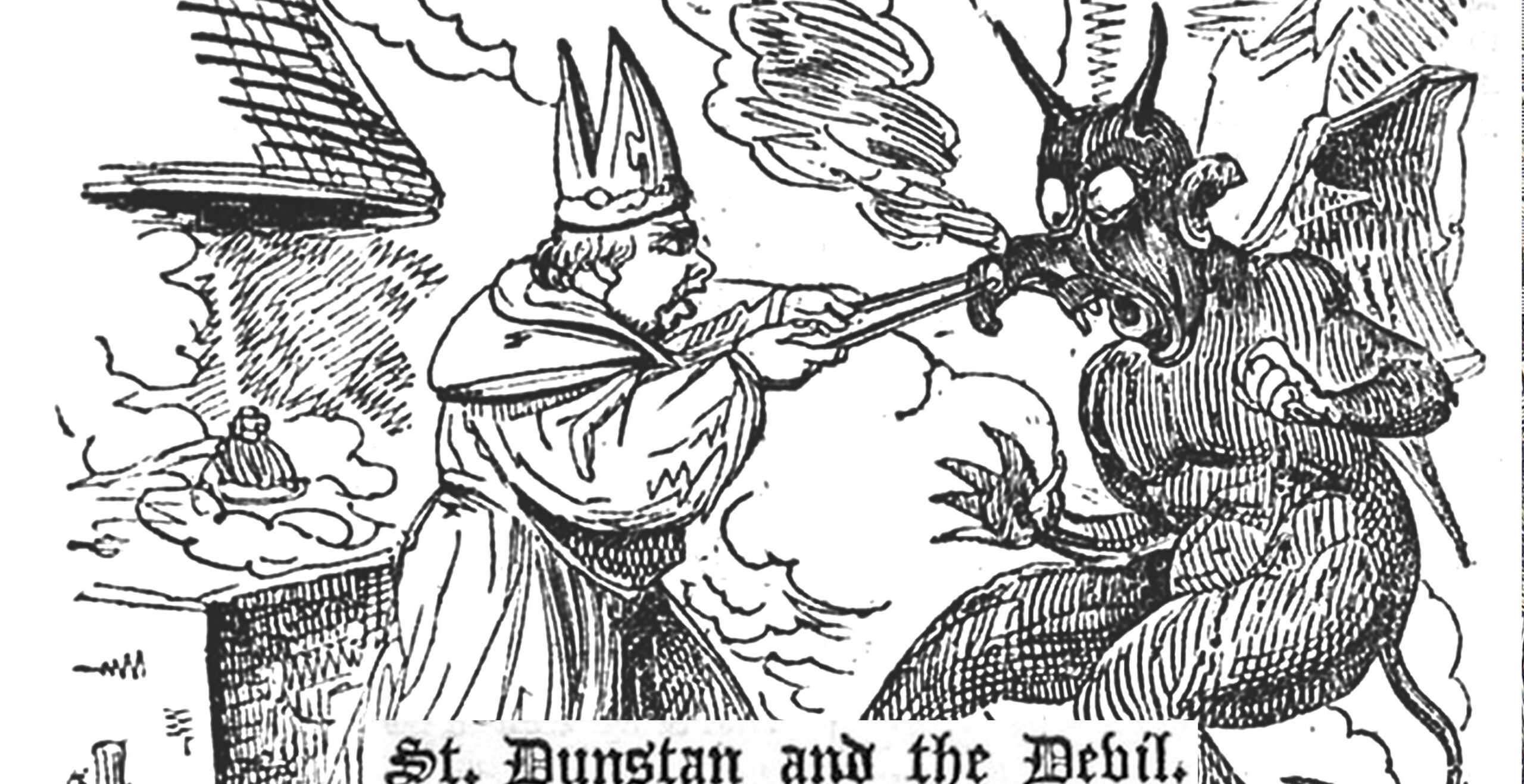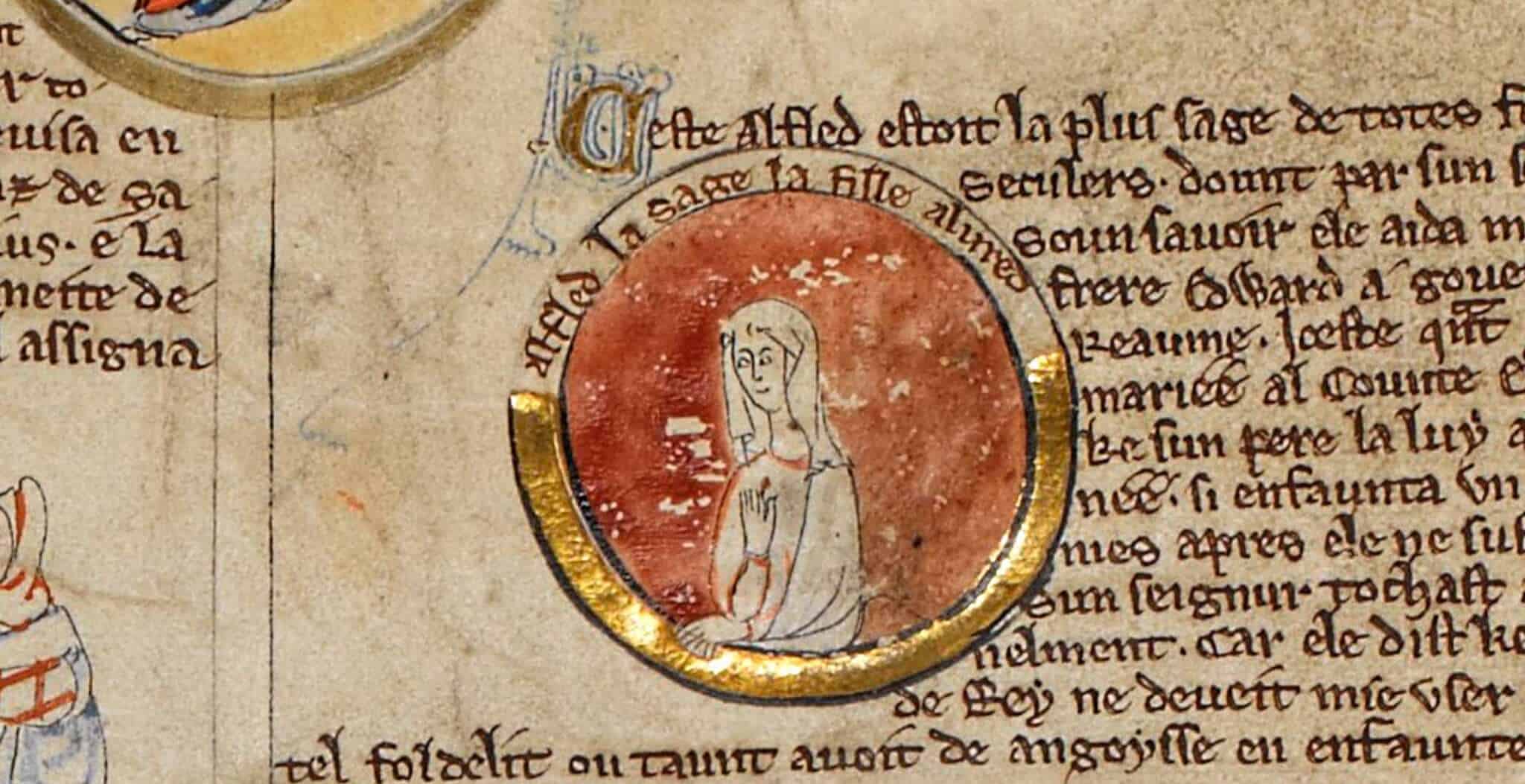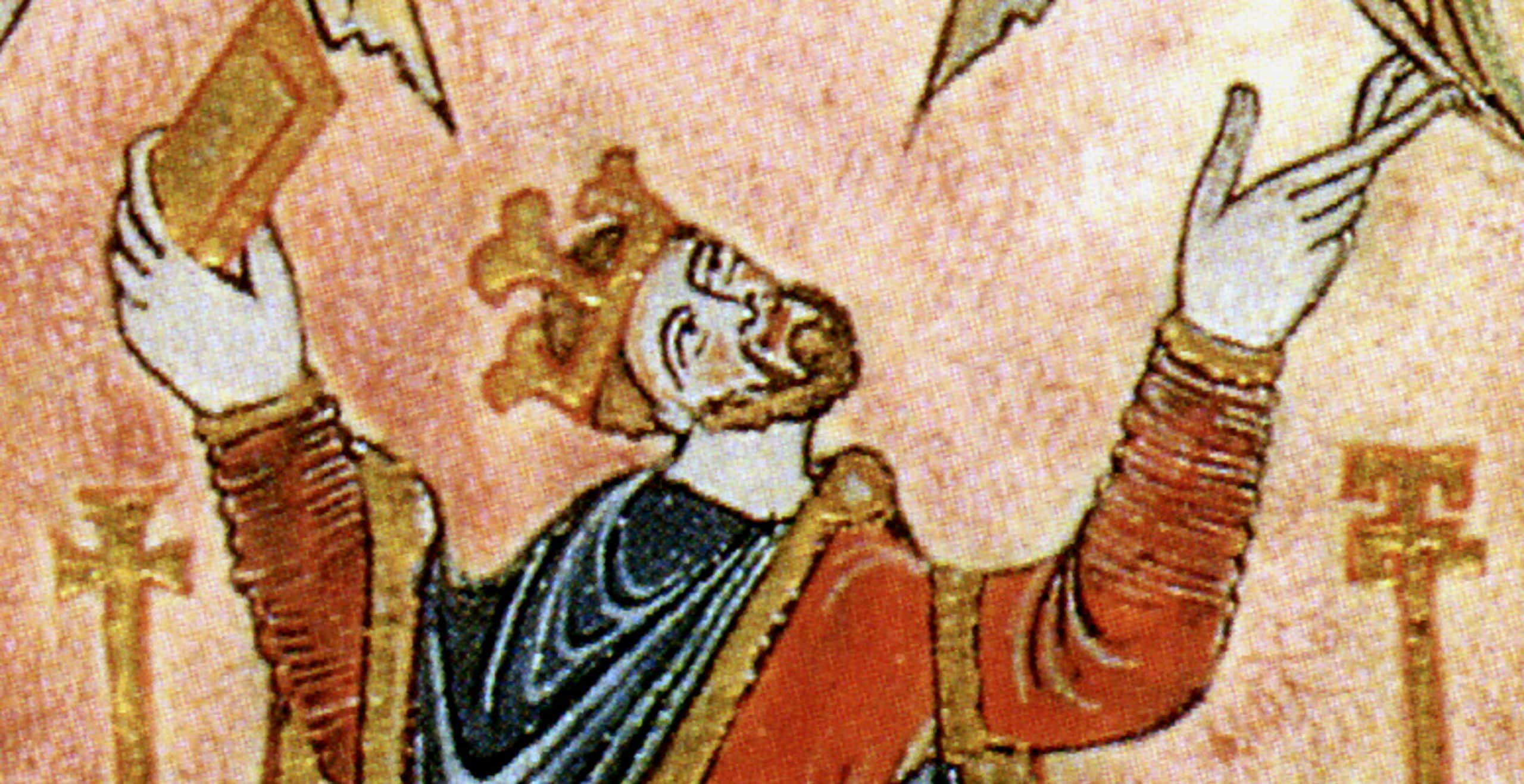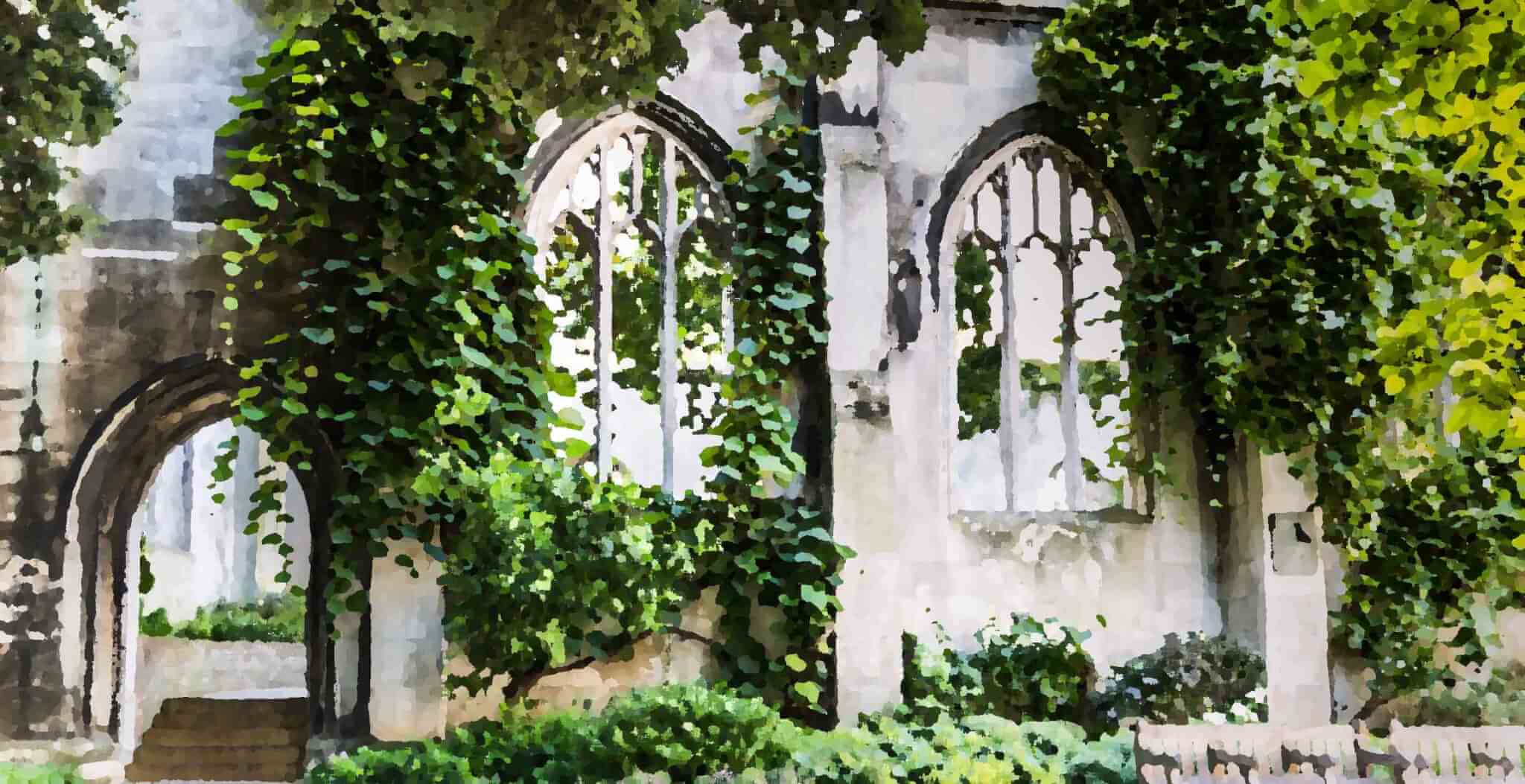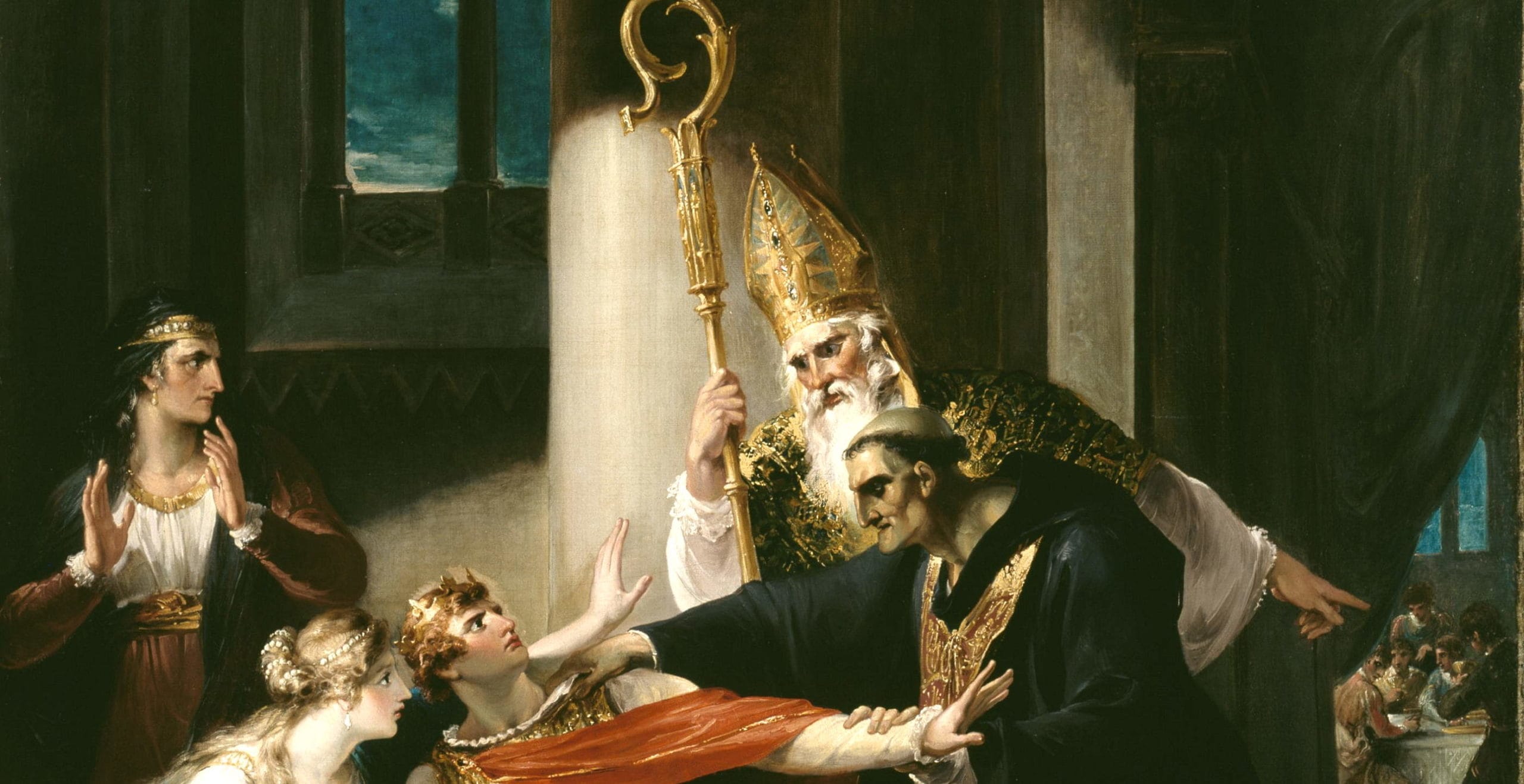St Dunstan was a prominent English religious figure during the Anglo-Saxon period and became a significant advisor to many of the kings of Wessex, helping to initiate monastic reforms and influence administrative decisions within the royal household.
Later created a saint for his work, during his lifetime he would serve as Abbot of Glastonbury Abbey, Bishop of Worcester as well as London and the Archbishop of Canterbury. His rise through the ranks of the clergy demonstrated his skills, influence and popularity which was to extend to successive generations of kings.
This celebrated English bishop began his life in Somerset in a small village of Baltonsborough. Born to a family with noble blood, his father Heorstan was a leading Wessex nobleman with invaluable connections, which would assist Dunstan in his chosen path.
In his youth, he would come under the tutelage of Irish monks who had settled in Glastonbury Abbey which at the time was a place of significant Christian pilgrimage for many. Very quickly he drew attention for his intelligence, skills and devotion to the Church.
With his parents supporting his path, he first entered the service of Archbishop Aethelhelm of Canterbury, his uncle and then into the court of King Athelstan.
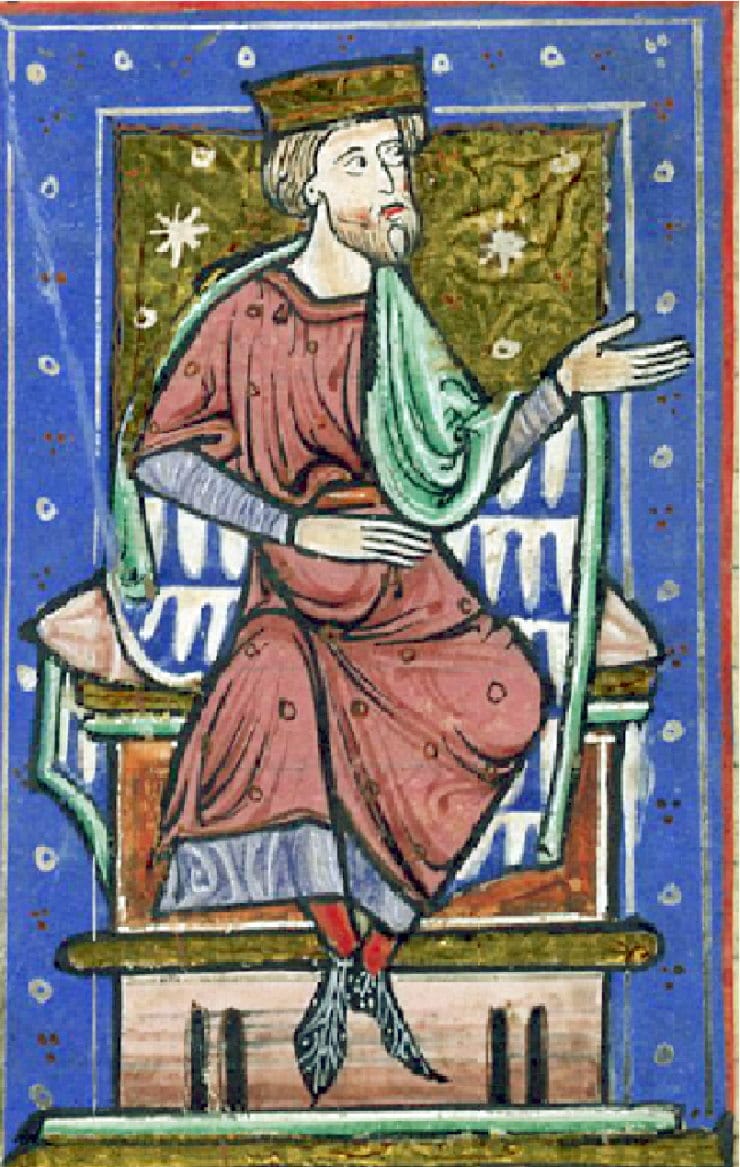
In no time at all, Dunstan’s talents earned him the favour of the king, which angered those around him. In an act of vengeance for his popularity, a plan was hatched to oust Dunstan and smear his name by associating him with the practice of the dark arts.
Unfortunately these baseless accusations of witchcraft were enough for Dunstan to be ousted by King Athelstan and face a torturous process upon leaving the palace. After being accosted, assaulted and thrown into a cesspit, Dunstan made for the refuge of Winchester where Aelfheah, Bishop of Winchester, would encourage him to become a monk.
Whilst initially sceptical about this massive life choice, a dangerous health scare he experienced, when he had swelling lumps over his body, was enough to make Dunstan have a change of heart. Most likely a form of blood poisoning as a result of his horrific beating, the fears of his health allowed Dunstan to make the choice to become a monk and in 943 he took Holy Orders and was ordained by the Bishop of Winchester.
In the coming years, he would spend his life as a hermit at Glastonbury, where he honed a variety of skills and talents such as his work as an artist, musician and silversmith.
Furthermore, it was at this time that the mythology of Dunstan’s alleged face to face meeting with the Devil was to have occurred and which would take on a legendary status of its own in the coming years.
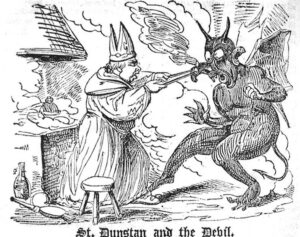
Such varied talents adopted during his time of solitude did not go unnoticed, particularly by prominent figures in the Anglo-Saxon court, including Lady Aethelflaed, King Athelstan’s niece. So taken with Dunstan was she, that she took him on as a close advisor and upon her death left him a significant inheritance which he would later use for monastic reforms.
His rising prominence was noticed by the new monarch, King Edmund, who in 940 replaced the outgoing King Athelstan who had so brutally expelled Dunstan from court.
In the same year, he was summoned to the royal court to take the role of a minister.
Sadly for Dunstan, the jealousy which he had invoked previously serving a king was to be replicated once more, as his enemies concocted ways to oust him from his position. Moreover, King Edmund seemed willing to send him away, that was until his own mysterious experience during a hunt where he almost lost his own life over a precipice. It was said that then he realised his poor treatment of Dunstan and he vowed, now that his life was spared, to make amends and rode to Glastonbury promising his religious observance and devotion.
In 943, Dunstan was awarded the role of Abbot of Glastonbury by King Edmund which enabled him to put into practise the ideas for monastic reform and development of the church.
One of his first tasks was to rebuild the abbey itself, which included the development of the Church of St Peter and the monastic enclosure.
With the physical construction underway, Glastonbury Abbey provided the perfect setting in which to establish Benedictine monasticism and instil its teachings and framework within the church.
That being said, not all of the monks at Glastonbury were said to have followed the Benedictine Rule, however his reforms began a movement which would continue with successive generations of kings.
Moreover, under his leadership, the abbey also became an epicentre for learning, as a school was founded and soon gained a favourable reputation for its educational enrichment of the local children.
In a short time, Dunstan had managed to not only physically rebuild the Church at Glastonbury but also develop new practices, create a centre of learning and usher in sweeping monastic reforms which would alter a generation of clerics and religious practices within the Anglo-Saxon community.
Only two years into his appointment, King Edmund was killed in a brawl in Gloucestershire and his successor, his younger brother Eadred, would take up the helm.
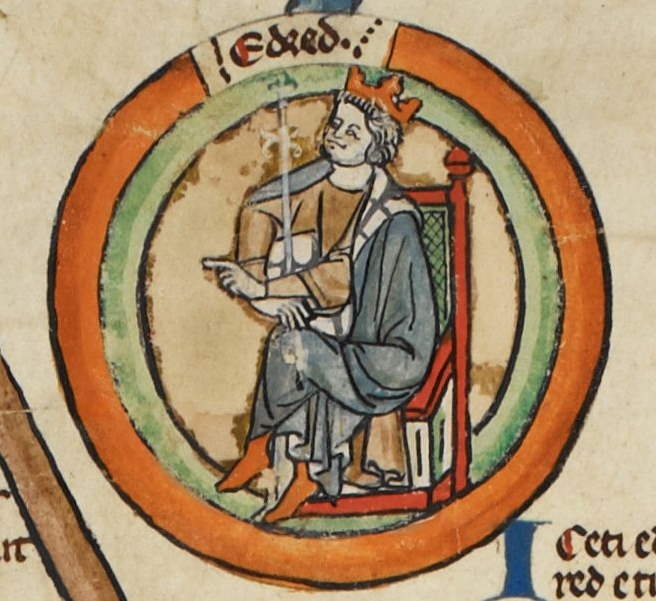
Upon his succession King Eadred would surround himself with the same royal retinue as his brothe,r which included Eadgifu, Eadred’s mother, the Archbishop of Canterbury, Athelstan, ealdorman of East Anglia (familiarly known as Half-King) and of course, Dunstan, Abbot of Glastonbury.
So much so, that during his ten year reign, Eadred would entrust Dunstan not only with clerical responsibilities but also royal authority, such as the ability to issue charters on his behalf.
Such was his level of trust in Dunstan that much progress was made during Eadred’s kingship, particularly with regards to the English Benedictine Reform which was facilitated by Eadred’s support.
In the latter half of his reign, Dunstan would take on more official royal duties whilst Eadred’s health failed and in doing so, refused the role of Bishop at both Winchester and Crediton in order to stay close to the king.
Upon Eadred’s death in 955, Dunstan’s fortunes were about to change considerably, as the succession of King Eadwig, the eldest son of the former King Edmund, proved to be a very different form of kingship.
Almost as soon as Eadwig was pronounced king, he showed himself to be of dubious moral character and unwilling to fulfil kingly responsibilities, something which Dunstan was quick to point out.
At the ceremony in Kingston-upon-Thames, Eadwig was caught by Dunstan sneaking away from his banquet in order to enjoy the company of a mother and daughter in another room. This irresponsible behaviour was viewed as reprehensible by Dunstan who admonished his behaviour, an initial encounter between king and abbot which would set the tone for the rest of their relationship.
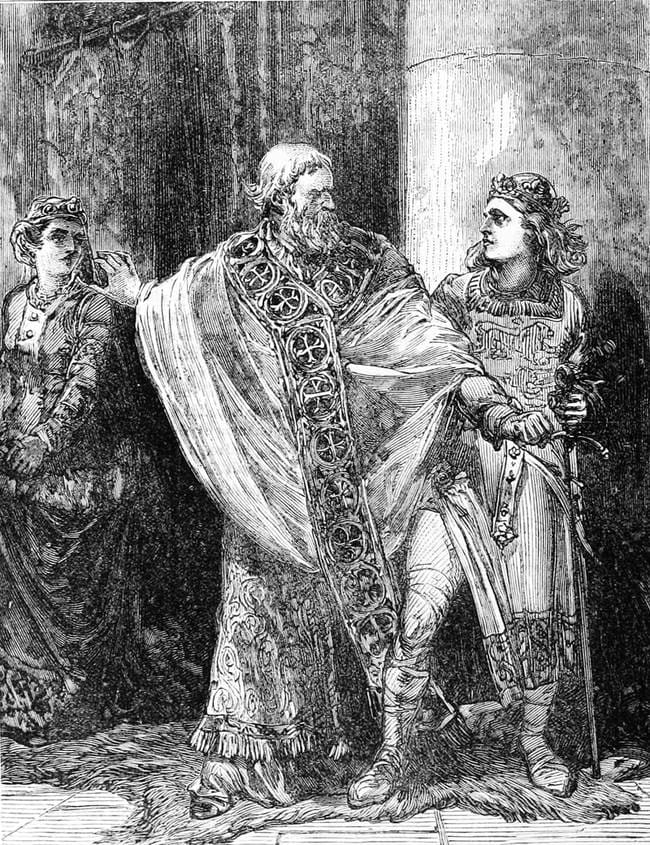
In the coming months, Eadwig sought to break away from those around him and distance himself from his uncle’s reign. In order to do so, he rid himself of those closest to him, including Dunstan.
Such divisions occurred when he chose as his bride Aelgifu, the younger female who had accompanied him during his ceremony. The other woman in his company had been her mother, Aethelgifu, whose ambitions to see her daughter married to the king saw her pressure Eadwig to banish Dunstan from his position.
Dunstan and other members of the church had condemned his choice of bride and thus, wishing to continue with his marriage unhindered, Dunstan found himself fleeing for his life, first to his cloister and then, upon realising he was not safe, he managed to cross the English Channel to Flanders.
Now faced with the prospect of indefinite exile whilst Eadwig remained in power, Dunstan joined the Abbey of Mont Blandin, where he was able to study continental monasticism, inspiring his own desires for reform in the English Church.
Fortunately for Dunstan, his exile was short as Eadwig’s younger and much more popular brother Edgar was chosen as king of the northern territories.
King Edgar, who later became known as “the Peaceful” was quick to recall Dunstan from his exile.
When he returned, he was consecrated as a bishop by Archbishop Oda and became Bishop of Worcester in 957 and the following year also Bishop of London simultaneously.
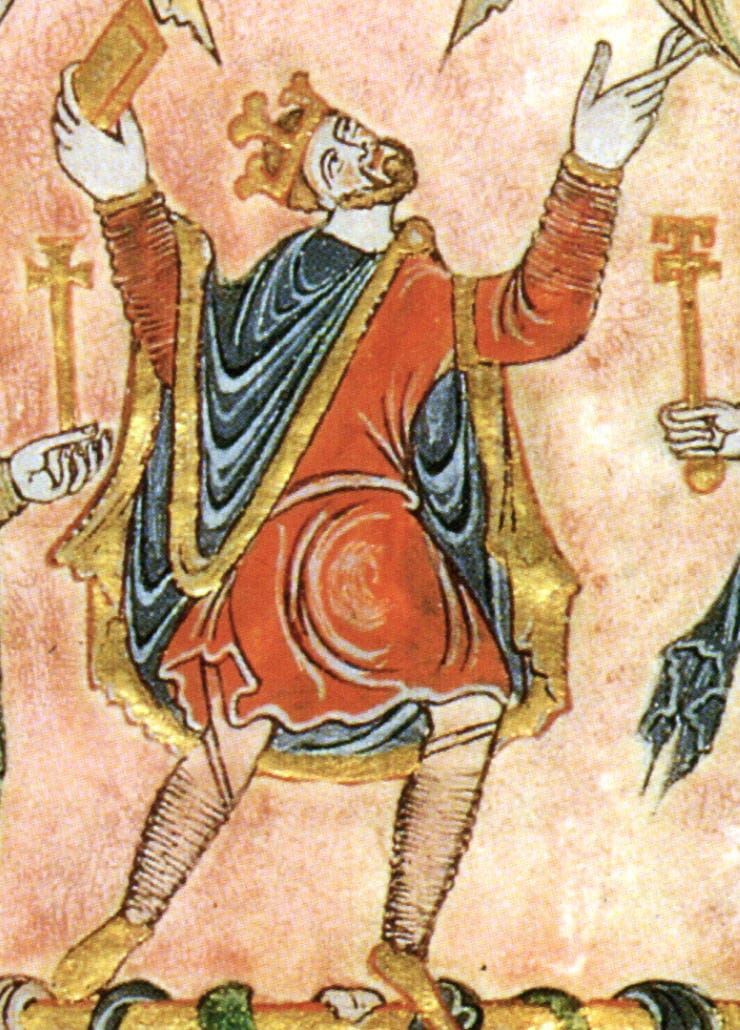
In 959, upon Eadwig’s death, Edgar officially became the sole king of the English and one of his first acts was to make Dunstan the Archbishop of Canterbury.
In this new role, Dunstan forged ahead with his reforms and in the process helped to usher in a period of religious and intellectual curiosity, which peaked with the development of monasteries, cathedrals and monk communities, even going as far as to initiate missionaries to Scandinavia.
In 973, Dunstan’s crowning glory in his career was his officiation of the coronation of King Edgar, which unlike modern-day coronations did not mark the beginning of his reign but rather a celebration of his kingship. This ceremony, as designed by Dunstan, would form the basis of future generations of coronation ceremonies for royals in the coming centuries, right up to the present-day.
Moreover, it also helped to cement Edgar’s rule, as the other kings of Britain pledged their allegiance during the procession of boats.
Almost twenty years of peaceful continuity, development and security occurred under King Edgar, with Dunstan’s influence always close by.
In 975, when King Edgar passed away, Dunstan would in turn assist in securing the throne for his son, Edward the Martyr.
Sadly, his reign was brutally cut short by his murder at the hands of his ambitious half-brother and his mother. When King Aethelred the Unready came to power, Dunstan’s career began to wane and he retired from court life, choosing instead to retreat into religious and educational pursuits at the cathedral school in Canterbury.
His devotion to the church, reforms and scholarship would continue until his death in 988. He was subsequently buried at Canterbury Cathedral and a few decades later in 1029 was formally canonised, thus becoming Saint Dunstan as a recognition of all his work.
His popularity as a saint would continue long after he was gone.
Jessica Brain is a freelance writer specialising in history. Based in Kent and a lover of all things historical.
Published 25th May 2023
